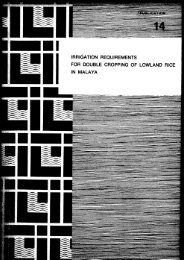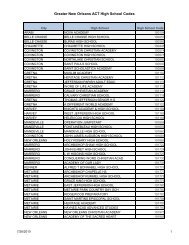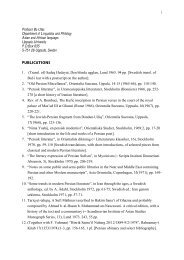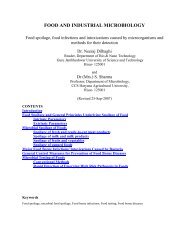On the Future of Indigenous Traditions - Munin
On the Future of Indigenous Traditions - Munin
On the Future of Indigenous Traditions - Munin
You also want an ePaper? Increase the reach of your titles
YUMPU automatically turns print PDFs into web optimized ePapers that Google loves.
do we look at it to find <strong>the</strong> distinctiveness? We may have to look at it from different<br />
perspective. These questions lead us to a different level to see what is causing <strong>the</strong>se<br />
problems. From all <strong>the</strong> discussions we had in <strong>the</strong> earlier chapters <strong>of</strong> this <strong>the</strong>sis <strong>the</strong><br />
conflicts identified here boil down to broadly two different perspectives: collective as<br />
against individualism.<br />
5.2.1 Individualism vs. collective perspective<br />
What is <strong>the</strong> difference between <strong>the</strong> Adivasis customary system as a traditional<br />
institution versus <strong>the</strong> modern State system? Is it on <strong>the</strong> ground <strong>of</strong> individualism as<br />
against collectivism? How and where should we see <strong>the</strong> problem?<br />
Taking <strong>the</strong> basis <strong>of</strong> ‘state’ from what Scruton has explained, <strong>the</strong> Indian State, broadly<br />
speaking is based on <strong>the</strong> principle that all individuals in it are its equal citizens,<br />
irrespective <strong>of</strong> caste, class, sex or religion, however, <strong>the</strong> state authority is sovereign<br />
over its citizens. When it comes to governance and execution <strong>of</strong> laws and rules, as it is<br />
a sovereign over its citizens that can exercise all <strong>the</strong> power it has to govern <strong>the</strong>m.<br />
Now, if we look at <strong>the</strong> Adivasis customary systems, and <strong>the</strong> issues around it,<br />
discussed with illustrations in <strong>the</strong> earlier chapters, <strong>the</strong>ir customary system has all <strong>the</strong><br />
reasons to be seen as based on <strong>the</strong> Adivasi’ collective principles. It is, however, not<br />
correct to say that <strong>the</strong>re are no individual rights within <strong>the</strong> collective customary<br />
system <strong>of</strong> <strong>the</strong> Adivasis. The collective approach could be seen in <strong>the</strong> social and<br />
cultural orientation <strong>of</strong> Adivasis customary organisations. Starting from <strong>the</strong> example,<br />
<strong>the</strong> distribution <strong>of</strong> land in <strong>the</strong> earlier stage which was not owned by an individual<br />
family but <strong>the</strong> ownership rotated. The positions as Parha, Manki, Munda too, and so<br />
on were not totally hereditary, until it changed for certain political and social reasons<br />
as discussed in chapter two.<br />
We find that in <strong>the</strong> Adivasis struggle for autonomy and <strong>the</strong>ir demand for a separate<br />
state (province) <strong>of</strong> Jharkhand from Bihar, many Adivasis did not fully support <strong>the</strong><br />
movement. However, it seemed for many Adivasis to identify with <strong>the</strong>ir Adivasi<br />
99

















